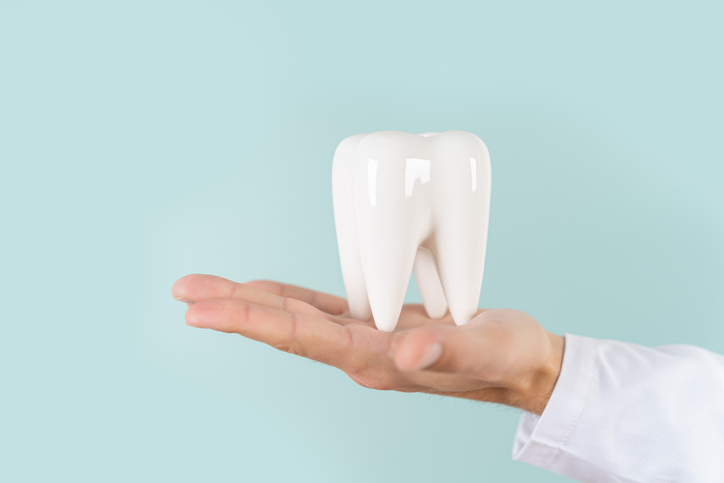
Maintaining your oral health is essential for your overall well-being, and sometimes, that means making decisions that may seem intimidating, like having a tooth extracted. At North Royalton Family Dental, Dr. Taylor and our team are dedicated to providing you with the best care, ensuring that every step of the process is comfortable and in your best interest. Tooth extractions can play an important role in preserving your dental health, and while they may seem daunting, they are often a proactive step towards maintaining a healthy smile for years to come.
Understanding the Importance of Tooth Extractions
Tooth extractions are one of the many tools that dentists use to protect and improve your oral health. While it’s always our goal to help you keep your natural teeth, there are certain situations where removing a tooth is the best option. The idea behind tooth extractions is not just about removing problematic teeth, but about protecting your remaining teeth and gums from future complications.
When a tooth is beyond saving due to decay, damage, or infection, an extraction might be the best course of action. By removing the damaged tooth, we can prevent the spread of infection, relieve pain, and make room for healthier teeth to align properly. Understanding the reasons why tooth extractions are necessary can help you feel more at ease with the process and confident in the decision to prioritize your dental health.
Common Reasons for Tooth Extractions
There are several reasons why a tooth may need to be extracted. Here are some of the most common:
Severe Tooth Decay
When tooth decay is caught early, it can often be treated with fillings or crowns. However, if the decay progresses too far and damages a significant portion of the tooth structure, extraction may be the best solution. Severely decayed teeth can become infected, leading to discomfort, swelling, and even risk of the infection spreading to other parts of the body. Removing the tooth can stop the decay from causing further harm.
Infection or Abscess
A tooth infection occurs when bacteria invade the inner layers of a tooth, often causing pain and swelling. In some cases, root canal therapy can save the tooth, but if the infection is too advanced or the tooth has been structurally compromised, extraction is necessary to prevent the infection from spreading. Tooth abscesses, which are pockets of pus caused by infection, can also lead to the need for an extraction if they do not respond to other treatments.
Gum Disease
Gum disease, also known as periodontal disease, is an infection of the gums that can spread to the surrounding bone and tissue, causing teeth to become loose. If gum disease has progressed to the point where the tooth can no longer be supported by the surrounding bone, extraction may be necessary. Removing the affected tooth can help stop the disease from progressing and protect your other teeth.
Overcrowding
In cases where there is not enough room in the mouth for all of the teeth to come in properly, extractions may be necessary to make space. This is often the case with wisdom teeth, which can become impacted or cause other teeth to shift. By extracting overcrowded teeth, we can help you achieve better alignment and prevent future issues with your bite or jaw.
The Tooth Extraction Process: What to Expect
At North Royalton Family Dental, Dr. Taylor and our team strive to ensure that every patient feels comfortable and informed about their treatment options. If you’re facing a tooth extraction, it’s natural to feel nervous, but knowing what to expect can help put your mind at ease.
Preparation
Before the procedure, we will carefully examine the tooth and surrounding area to determine the best approach. In some cases, an X-ray may be necessary to get a better view of the tooth’s position and root structure. We will also discuss your sedation options, which may include local anesthesia to numb the area, or sedation options for patients who feel anxious about the procedure.
The Extraction Process
The process itself is straightforward. Once the area is numb, Dr. Taylor will gently loosen the tooth and carefully remove it. If the tooth is impacted (meaning it hasn’t fully emerged from the gum), a small incision may be made to access and remove it. Our team takes great care to make the procedure as smooth and comfortable as possible for you.
After the Procedure
Once the tooth has been removed, the area will be cleaned, and a gauze pad will be placed to help control bleeding. In some cases, dissolvable stitches may be used to close the area. You will be given detailed instructions on how to care for the extraction site to promote healing.
How Tooth Extractions Can Improve Your Overall Oral Health
Although no one looks forward to having a tooth extracted, the procedure can bring many long-term benefits to your oral health. By removing problematic teeth, you can avoid a range of issues that might otherwise worsen over time.
Preventing Infection and Decay
Removing a tooth that is severely decayed or infected helps to stop the spread of bacteria that could compromise your other teeth and gums. It also alleviates pain and discomfort caused by the infection. By taking action early, you can avoid more invasive procedures down the line.
Improving Bite Alignment
In cases of overcrowding, tooth extractions can create space for your remaining teeth to move into better alignment. This can improve both the function and appearance of your bite, leading to a more comfortable and aesthetically pleasing smile. Properly aligned teeth are also easier to clean, reducing your risk of cavities and gum disease in the future.
Long-Term Oral Health Benefits
By addressing issues like infection, overcrowding, or gum disease with tooth extractions, you are taking a proactive step towards protecting your oral health. In the long term, this can mean fewer dental problems, less discomfort, and a healthier, more confident smile.
Post-Extraction Care and Next Steps
After your tooth extraction, following proper post-care instructions is essential for a smooth recovery. Here are some tips to help you through the healing process:
Managing Discomfort
You may experience some discomfort and swelling after the procedure. This is normal, and we will provide you with guidance on managing this with over-the-counter pain relievers and cold compresses. Be sure to rest and avoid strenuous activity for at least 24 hours following your extraction.
Promoting Healing
It’s important to keep the extraction site clean to prevent infection. Avoid rinsing your mouth vigorously for the first 24 hours and stick to soft foods while the area heals. Drink plenty of fluids, but avoid using straws, as this can dislodge the clot that forms in the socket and delay healing.
Replacing Missing Teeth
Once your mouth has healed, we can discuss options for replacing the missing tooth to restore your smile and prevent any shifting of your remaining teeth. Dental implants, bridges, and dentures are all options to consider, depending on your needs and preferences. Dr. Taylor will work with you to determine the best solution to restore function and appearance.
Take the Next Step Toward a Healthier Smile
At North Royalton Family Dental, we are committed to helping you achieve optimal oral health. If you believe you might need a tooth extraction or are experiencing dental discomfort, don’t wait—contact us today to schedule an appointment with Dr. Taylor. Our experienced team is here to answer any questions you may have and guide you toward the best treatment options for your smile.

